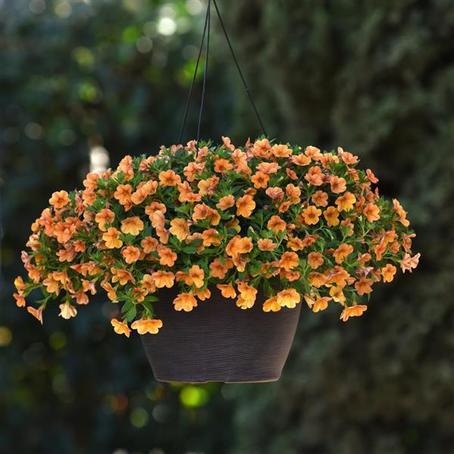Breeding Annuals for the Fall Landscape
October 29, 2021 | 3 min to read

When you think of fall, what color do you think of? When I think of fall, I think of orange in all its bright, burnt, saturated and earthy tones coming at me from every corner of the landscape and supermarket aisle. I think of expansive greenish-brown fields loaded with oversized orange pumpkins ready for the pickin’, handfuls of candy corn with its unnatural orange stripe and my aunt’s orange sweet potato pie destined for my belly.

Many people may think of the colors of turning leaves, from green through the range of yellows and oranges to finally red, but I grew up in inner city Houston, where this was not a thing. Most often the leaves were green one day and gone the next. To give our home an autumnal feel, my mom would haul a load of orange mums from the local garden center. Always the mums, because they were the easiest to care for and had the best fall color, and that’s what was available.
So, beside mums and marigolds, why are there so few great orange plant offerings in garden centers in the late summer and into fall?
Well, there are a few reasons for this. One has to do with the color orange itself. Orange is a tricky color to breed for. To create orange, the color pathways which lead to the creation of specific anthocyanin and carotenoid pigments (think carrot color) must be already innate in the plant genetics. If they are, then the breeder must create crosses that increase the expression of these pigment genes, while maintaining the desirable shade of orange (can’t be too red, pink or brown), while decreasing expression of unfavorable genes such as those that encode for disease susceptibility traits. To further complicate matters, there are many traits that act in a ways that are detrimental to breeding for a good orange that are not obvious at the moment of selection. The color orange can be very pH sensitive, so while the plant selected may be bright and beautiful and the color of a mandarin, get that baby in substrate over 7.2 and now you’ve got a great plant that blooms the color of a pink grapefruit. Orange flowers can also be very UV sensitive, getting a nice ‘put through the hot wash cycle’ look after some period of high light.
Someone along the way saw the issue with breeding for orange flowers and devised a shortcut via transgenic modification. Some very nice orange petunias were bred using this technology, though a foreign genetic construct generally unknown to the breeder. The inserted maize gene was eventually discovered, and the revelation forced growers and breeders to toss much of their plant material since it was banned by the USDA and other agricultural agencies around the world. In 2021 the gene technology was deregulated and can now be used in breeding and sold.
Traditional breeding for better oranges is still the rule though. We are working hard to get deeper and brighter oranges in many of your favorite flowers. We dream of neon orange and pumpkin colored Calibrachoa and Coleus that can be started in the heat of the summer to grow throughout the fall is this breeder’s dream, and I am striving hard to get there so that the consumer can have a more expansive palette to dabble in when creating their fall garden.
Laura Masor, PhD is a Vegetative Annual Flower Breeder at Ball FloraPlant focusing on Calibrachoa, Verbena, Angelonia, and Coleus. Laura is responsible for the conceptualization and development of the Cha-Cha series of calibrachoa in less than four years! Laura has been selected as a member of the 2021 Garden Product News’ (GPN) 40 under 40 — a well deserved recognition. You can find Laura on LinkedIn.
The National Initiative for Consumer Horticulture (NICH) is a consortium of industry leaders who are promoting the benefits and value of horticulture. NICH brings together academia, government, industry, and nonprofits to cultivate the growth and development of a healthy world through landscapes, gardens and plants — indoors and out.
